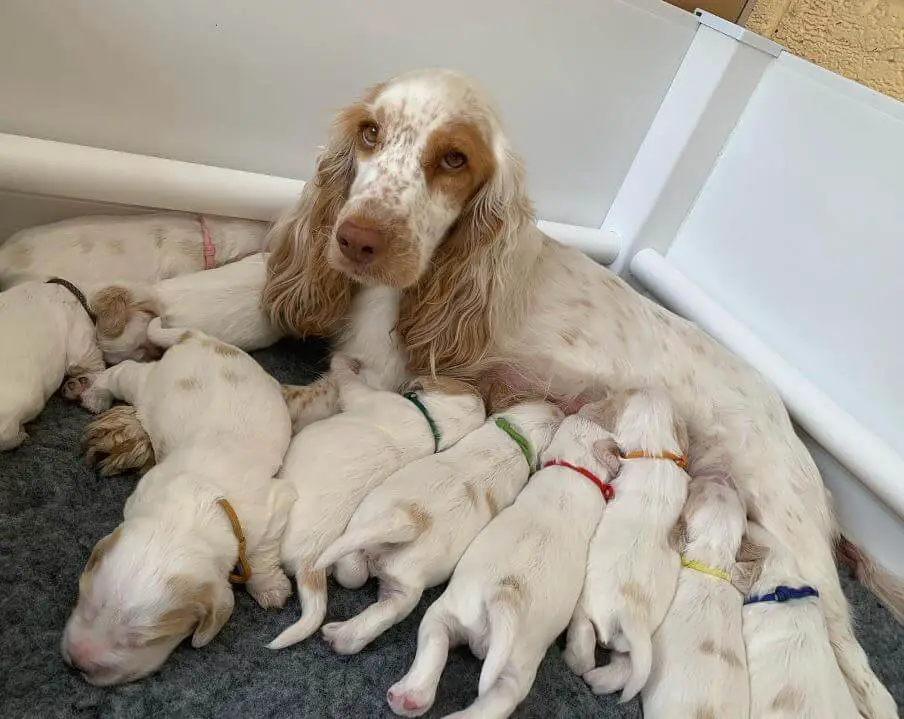Mastitis is a common condition that can affect nursing mother dogs, causing discomfort and potential health complications. It is essential for dog owners to be aware of the signs and symptoms of mastitis, as well as the appropriate management strategies. In this article, we will provide a comprehensive overview of mastitis in nursing mother dogs, helping you understand this condition and take the necessary steps to support your dog’s health.

Understanding Mastitis in Nursing Mother Dogs:
Mastitis is an inflammatory condition of the mammary glands in nursing mother dogs. It is usually caused by bacterial infection, which enters through cracks or injuries in the nipples. The bacteria multiply rapidly, leading to inflammation, swelling, and pain in the affected mammary glands. If left untreated, mastitis can cause serious complications and affect both the mother dog and her nursing puppies.
Signs and Symptoms of Mastitis:
Recognizing the signs of mastitis is crucial for early intervention. Look out for the following symptoms in your nursing mother dog:
- Swollen, Red, and Painful Mammary Glands: The affected glands may appear larger than usual, and the skin around them may be red and warm to the touch. Your dog may exhibit signs of discomfort or pain when nursing or when the affected area is touched.
- Lumps, Hardening, or Abscesses: Mastitis can cause the formation of lumps or hardening in the mammary glands. In some cases, abscesses, which are pockets of pus, may develop. These abscesses can rupture, leading to open sores and discharge.
- Decreased Milk Production: Mastitis can affect milk production in the affected glands. You may notice a decrease in the amount of milk being produced or a change in the consistency of the milk.
- Systemic Signs of Infection: In severe cases, nursing mother dogs with mastitis may display systemic signs of infection, such as lethargy, fever, loss of appetite, and dehydration. These symptoms indicate a more advanced stage of mastitis and require immediate veterinary attention.

Managing Mastitis in Nursing Mother Dogs:
If you suspect that your nursing mother dog has mastitis, it is important to consult your veterinarian for a proper diagnosis and treatment plan. Here are some general guidelines for managing mastitis:
- Veterinary Examination: Your veterinarian will perform a thorough examination to assess the severity of the mastitis and determine the appropriate treatment. They may take samples from the affected glands for bacterial culture to identify the specific bacteria causing the infection.
- Antibiotics: In most cases, antibiotic therapy will be prescribed to combat the bacterial infection. It is essential to administer the medication as directed by your veterinarian and complete the full course of treatment.
- Warm Compresses and Massage: Applying warm compresses to the affected glands can help alleviate pain and promote milk flow. Gentle massage of the glands after applying the warm compresses can also help in milk removal.
- Milk Expression: It is important to ensure that the affected glands are emptied regularly to prevent milk stasis and the development of further complications. Your veterinarian may provide guidance on the appropriate techniques for milk expression.
- Supportive Care: Provide a comfortable and clean environment for your nursing mother dog. Ensure she has access to fresh water, a nutritious diet, and adequate rest to aid in her recovery.
Preventing Mastitis in Nursing Mother Dogs:
Taking preventive measures can help reduce the risk of mastitis in nursing mother dogs. Here are some strategies to consider:
- Proper Hygiene: Maintain good hygiene by regularly cleaning the mammary glands and nipples. Remove any dirt or debris that may accumulate, as they can introduce bacteria.
- Promote Gentle Nursing: Ensure that puppies nurse gently without excessive force. Discourage rough nursing behavior that can cause nipple injury.
- Monitor Puppies’ Health: Regularly check the puppies for signs of poor health, such as decreased activity, poor weight gain, or abnormal stools. Sick or weak puppies may not nurse effectively, increasing the risk of mastitis.
- Adequate Nutrition: Provide a balanced and nutritious diet for your nursing mother dog to support her overall health and immune system.

Mastitis in nursing mother dogs can be a challenging condition to manage, but with prompt veterinary care and proper treatment, most cases can be resolved successfully. Recognizing the signs and symptoms of mastitis, seeking veterinary attention, and following the prescribed treatment plan are essential for the well-being of both the mother dog and her nursing puppies. By understanding and taking preventive measures, you can help ensure a healthy and comfortable nursing experience for your dog.
